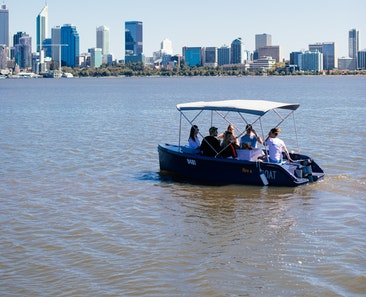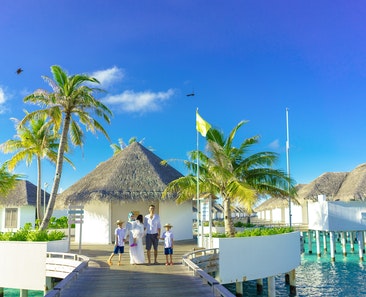In transit: One day in Palermo
Palermo Airport Falcone Borcellino,
1 August 2024
I’m in Palermo today, peeps. Sort of by chance. And by chance, I mean a cheap direct flight from Oslo and a flight onward to Lampedusa (also cheap). I’ve been curious about that enigmatic island for a long time, and will tell you about it in due course.
But today is about Palermo. Never been here before. I have ca. 24 hours in town, and had better spend it well.
First impression is favourable: in and out of the airport is quick and efficient, and the bus to the city centre is only €8.
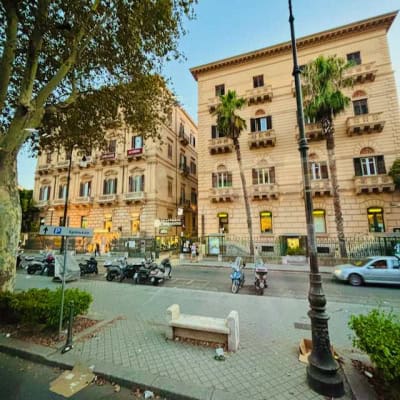
Palermo looking pretty in twilight
I’m pleased with the lodgings I’ve found. It is very central, on Piazza Marina, just metres from La Cala, the harbour – and in the heart of Palermo’s historic centre. Add to that a huge room, and not one, but two little balconies, one outside the bedroom and one outside the bath, both with a view to the pleasantly buzzing nightlife on Via Bottai below.
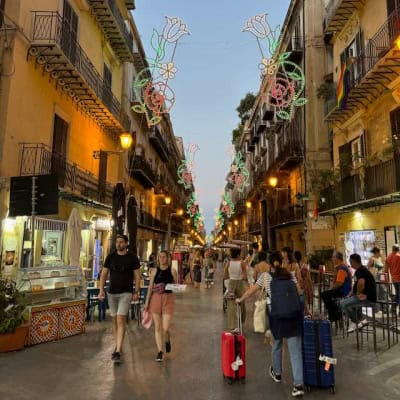


That’s my room on the 2nd floor there, with both balcony doors wide open
Up bright and early, can’t waste any time with only one day here. Also, I’ve spotted a cruise ship, or was it two? Best get to the most interesting parts of town before it’s overrun.
Arab-Norman Palermo
Palermo – and Sicily – has been ruled by many different people through the ages. But then you’d kinda expect that, considering the city is 2,700 years old. The Phoenicians founded Palermo in 734 BCE, then came the Greeks, Romans, Arabs and Normans. Together, all these influences have created what turns out to be a beautiful and energetic city, and I’m really glad I stumbled upon it, however inadvertently.
Arab-Norman Palermo is listed as world heritage, and the listing focuses on the two latter rulers. It includes 9 structures: 3 churches, 2 palaces, a cathedral and a bridge, as well as the two cathedrals in nearby Cefalú and Monreale. I like how they all point back to people coexisting productively, across ethnicities, cultures and religion. We could all learn a thing or two.

Still going on in Palermo
This diverse mix is easy to spot in Palermo’s architecture: Norman cathedrals next to Baroque churches, and ancient palaces showing Arab influences with their courtyards and intricate mosaics.
I don’t have time to see all 9 today, since I also want to stop at a famous bakery in a convent, and take some time wandering aimlessly through the streets, so I choose 3 of the buildings: the cathedral, and the churches of Santa Maria dell’Ammiraglio and San Cataldo. But first, that bakery.
I Segreti del Chiostro
The secrets of the cloister! Impossible not to be drawn in by a name like that – and a location like this.
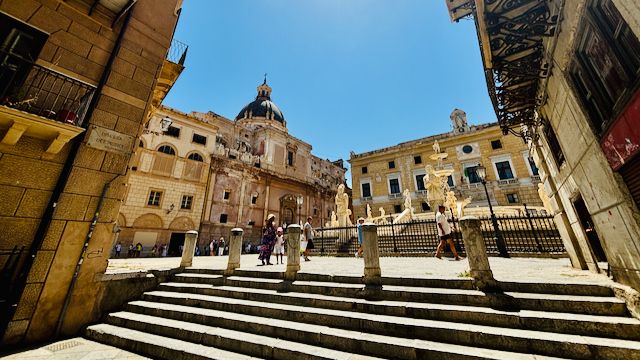
On Piazza Bellini, up these stairs and under that dome…
…is a former convent dedicated to Santa Caterina d’Alessandria, a martyr from those early centuries of the common era. Caterina was born in 287 and died 18 years later, for refusing to recant her faith. She engaged in debates with the emperor and his philosophers, and always won. Such a rebellious attitude cannot go unpunished, of course, so off with her head. Legend has it, instead of blood, milk flowed from her severed head.
Fast forward many centuries, and the Dominican nuns living in the convent, were known for their baking skills. Today’s bakery, La Dolceria di Santa Caterina, is located in the same place where the nuns used to create their delectables, and their recipes are still used, keeping tradition alive.
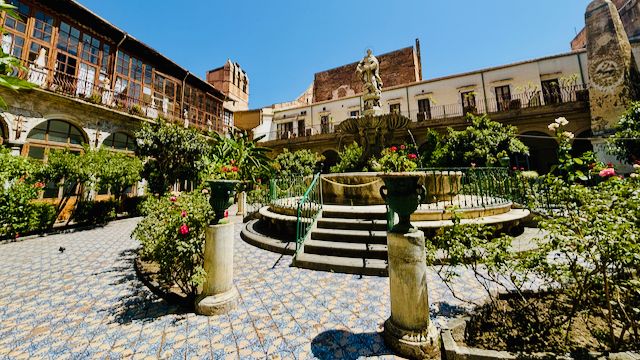
Rumour has it, this is also where you can get the best cannoli in the world.
Customers indulge in all this dolci italiani in a lovely courtyard with fountains, flowers and pomegranate trees. Unfortunately for me, the queue into la dolceria is looong and slooow, so I settle for enjoying the courtyard, cake-less. A shame really, as the recipe calls for lots of almonds, which I love.
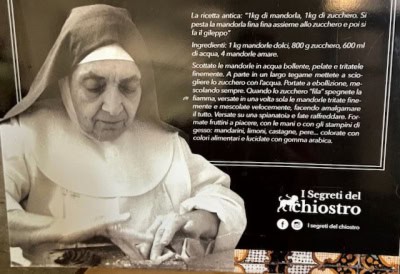
Here is a snap of the nuns’ recipe. Give it a go – and let me know what I missed out on.
The heritage sites
Chiesa di Santa Maria dell’Ammiraglio and Chiesa di San Cataldo
Not far from the bakery is Chiesa di Santa Maria dell’Ammiraglio, known as La Martorana. Built in 1143, it is a small, square building with a dome and four arches, characteristic of Arab-Norman design. But the inside is the best part, gold and blue and beautiful, with Byzantine mosaics, absolutely worth the €2 entrance ticket. Stunning, isn’t it?
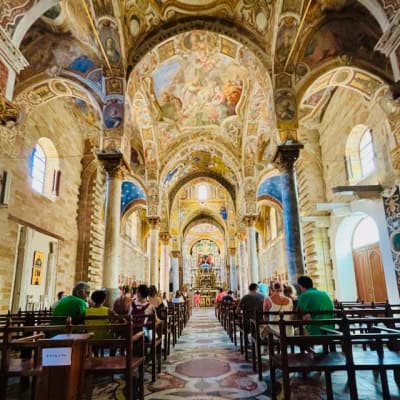
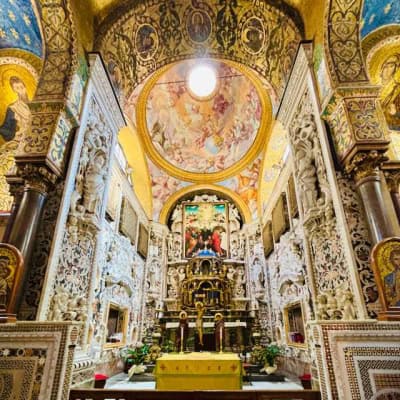
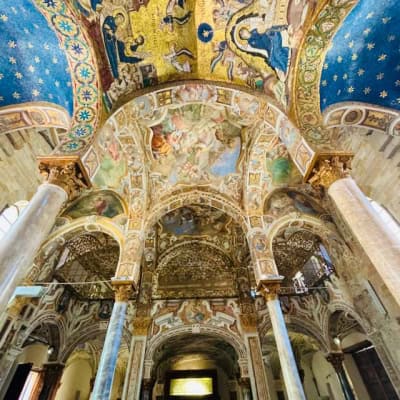
Both Roman Catholic and Greek Orthodox services can be held here.
Next door is the tiny Chiesa di San Cataldo, even smaller, and with three red domes. It was built 11 years later, as a palace chapel. The interior here is the opposite, there is hardly any ornamentation, which somehow makes it more atmospheric. I think it is equally stunning in its simplicity.
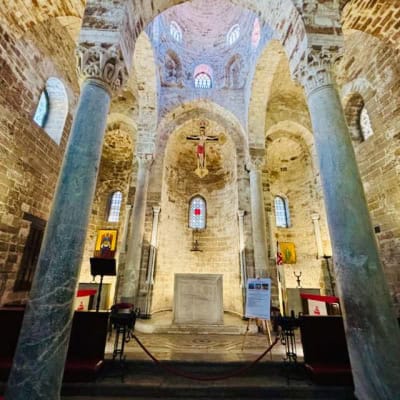
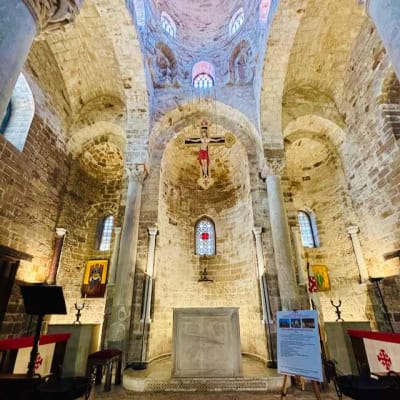
Catedrale di Palermo
The highlight, though, is Palermo Cathedral, the city’s most iconic example of all this cultural fusion. Once there was a Byzantine basilica here, which was turned into a mosque after the Arabs conquered Sicily in the 9th century, which again became a church in 1185.
Curiously, though – and I regret not snapping a photo of it – is the inscription on one of the entrance columns. It is in Arabic and quotes the 7th Surah of the Quran. A Muslim religious text on a supporting column on a Roman Catholic cathedral.
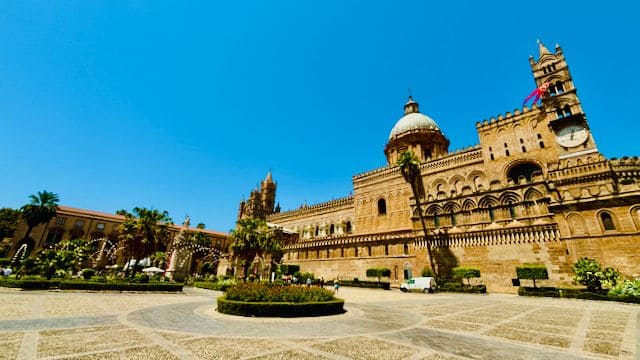
After this delightfully dazzling exterior, I had high expectations of the interior, but I found it… dare I say it, boring.
This addition outside, however…
Haven’t been able to find out who she is, this lady on a Mardi Gras float, but she fits in perfectly.
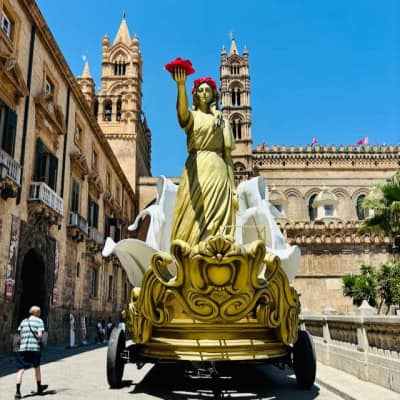

Here she is – front and back
Finally, a few scenes from today’s aimless wandering –

along Via Roma, Palermo’s high street –

– and in the back streets
Gotta run! Danish Air Transport waits for no one.

Arab-Norman Palermo and the Cathedral Churches of Cefalú and Monreale is a UNESCO World Heritage site.
Here are more UNESCO World Heritage sites around the world.
In transit: One day in Palermo is a post from Sophie's World


